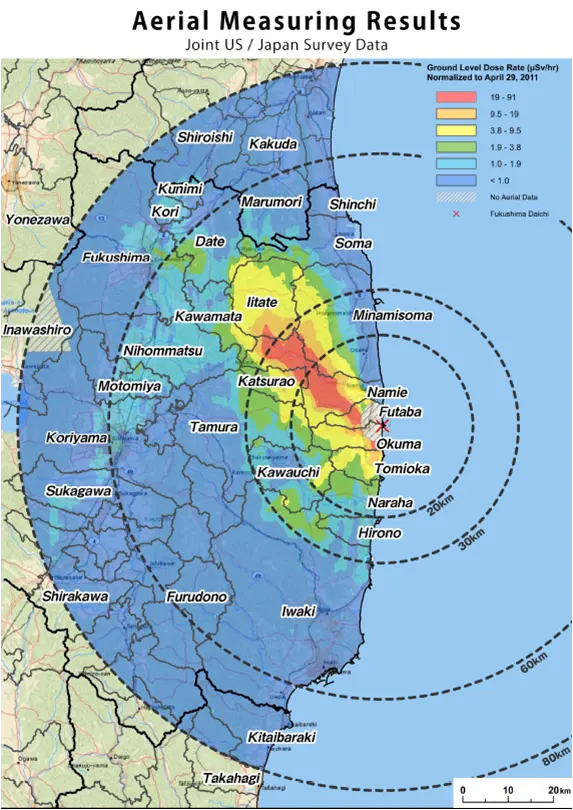Japan exported about $600 million worth of aquatic products to China in 2022, making it the biggest market for Japanese exports, with Hong Kong second. Sales to China and Hong Kong accounted for 42% of all Japanese aquatic exports in 2022, according to government data.
They still can’t come up with anything other than “it’s not safe!” And “you’re so irresponsible”?
Previous articles on this say the water is less contaminated than that which comes out of some of China’s plants.
This article: IAEA says 10,000 becquerels per liter is the safe limit. Japan’s output will be 63 per liter.
China are the ultimate projectionists with this stuff. No transparency for themselves, and very quick to scream blue bloody murder about everyone else.
And that’s probably the figures China allows the international community to know. If the reports on that are anything like their emissions reports, it’s not even worth the time it took to generate them.
So true. In China, all the nuclear reactors are as radioactive as the elephant’s foot. They say solar is expanding really quickly, but actually it’s all a lie. Did you know under the Xi regime, absolute poverty has increased tenfold? It’s very sad. China lies about Japan’s nuclear safety for political reasons, so everything they say is wrong and actually my own dreams about them are reality.
good on you schooling these idiots for thinking china would misrepresent their emission stats, just because they have previously misrepresented their emission stats
Anyone can measure it, you fill a bucket near the plant and you put a dosimeter in it through a plastic bag, if something is wrong you’ll know
According to Tepco test results released on Thursday, that water contained about up to 63 becquerels of tritium per litre, below the World Health Organization drinking water limit of 10,000 becquerels per litre. A becquerel is a unit of radioactivity.
I live in Japan and am not at all worried about this. Maybe local seafood prices will drop. Great for us, but sucks for the fishermen and their families.
Now, if we could properly build things and not cheap out on the plans so that this doesn’t happen again, that’d be great… (also, more geothermal!)
Are bananas next? 0.1 µSv/banana is way higher than 3.9 µSv/yr 😱
I specifically limit myself to less than 39 bananas per year.
That must be why gorillas at the zoo are so jacked.
anyone know a better radioactivity monitoring site than this one?
https://map.safecast.org/?y=37.527&x=140.969&z=10&l=0&m=2
Fukushima sure is lit up like a Christmas tree on this one.
“Lit up like a Christmas tree” - yeah, at 4 µSv per hour. So you’d have to swim there for just about 4000 hours to get the equivalent of a full body CT scan.
I guess camping at Chernobyl is no big deal now as well.
https://map.safecast.org/?y=51.384&x=30.078&z=12&l=0&m=2
Yes, that’s literally true (or was before the Russian army visited). The ambient radiation in the Chernobyl Exclusion Zone, which is all you’d see on a map, is only slightly elevated. The main risk there is of disturbing the ground or abandoned debris and exposing much more dangerous material buried just below the surface.
RIP the trench digging soldiers
Sounds like eating stuff that lives there would be unadvised as well.
There were tourist trips into the exclusion zone around Pripyat (closest town to the plant) all the time until Covid. I’m guessing they haven’t restarted because of the war now, but plenty of people visited with no ill effects.
Visiting, sure. Eating products grown/harvested there seems ill advised.
Because the color gradient is relative. A large enough banana would also light up. Also exposure time is another factor and this will dissipate very quickly. You can play it safe by abstain of seafood and swimming for a week.
Radiation levels have decreased since the accident in 2011:

https://upload.wikimedia.org/wikipedia/commons/0/06/Fukushima_radiation_dose_map_2011-04-29.pngNote that on Safecast, you can enable “Crosshair” in the hamburger menu to see the actual numbers.
The central blob area is currently around 5 μSv/hr, so if you live there for a year it’s 44000 μSv, or 44 mSv. The xkcd chart says 100 mSv is the lowest one-year dose clearly linked to increased cancer risk.
So 3 years there equals measurable increased cancer risk.
Cancer risk from radiation is not just the absolute amount of exposure, but the duration of the exposure as well. Short high-intensity radiation doses carry higher risk than long, low-intensity doses.
And 100mSv/yr is a rate, which is greater than 44mSv/yr. After 4 years, you will still have not had the dose needed that is linked with increased cancer risk.
Read it again. Not what they said.
if you live there for a year it’s 44000 μSv, or 44 mSv
44 x 3 = 132 which is GREATER than 100
You can’t compare exposure over 3 years to a limit for one year.
Radiation damage depends on time period of exposure.
Though I still wouldn’t want to live there; the area has been evacuated for good reason.
the graph on the map is μSv/h
using the crosshairs shows 29.88 μSv/h at the waterfront by the plant
that is 0.02988 μSv/h = 261.7488 mSv/a
so not a place I’d want to get food from to say the least
That’s on land. Where a whole bunch of various radionuclides have concentrated and remain fixed in place.
This “wastewater release” that’s being discussed is the release of low-intensity tritium that will immediately dilute into the whole ocean. You’re comparing apples to moonrocks. Completely different things.
Sure, just pick a completely different location to suit the conclusion you already made.
deleted by creator
So the yellow spots are 10 microsieverts per hour, the equivalent of a dental radiograph. A week of constant exposure will bring you up to flight attendant levels. More context can be viewed on this Wiki article.
One week equals one year as a flight attendant.
The U.S. National Council on Radiation Protection (NCRP) reports that aircrew have the largest average annual effective dose of all U.S. radiation workers.
Hmm.
Well obviously
Now the chinese plastics in the water will get cancer… Smh
This is the best summary I could come up with:
It maintains the water release is safe, noting that the International Atomic Energy Agency (IAEA) has also concluded that the impact it would have on people and the environment was “negligible.”
Japan has requested that China immediately lift its import ban on aquatic products and seeks a discussion on the impact of the water release based on science, Prime Minister Fumio Kishida told reporters.
“There are not going to be any health effects… There is no scientific reason to ban imports of Japanese food whatsoever,” said Geraldine Thomas, former professor of molecular pathology at London’s Imperial College.
South Korean Prime Minister Han Duck-soo said import bans on Fukushima fisheries and food products will stay in place until public concerns were eased.
North Korea’s foreign ministry demanded that the water discharge be immediately halted, calling it a “crime against humanity”, state media reported.
A few dozen protesters gathered in front of Tepco’s headquarters in Tokyo holding signs reading “Don’t throw contaminated water into the sea!”
The original article contains 788 words, the summary contains 164 words. Saved 79%. I’m a bot and I’m open source!
If Japan keeps using nuclear reactors, someone might die of cancer one day. In order to protect the environment, Japan should burn fossil gas instead!
I know this is a political move by China, the water is (probably) fine. I also know the loss of export is not great for Japan.
But I hope this means there is a little less intensive fishing going on.
Good / meh, nothingburger.
deleted by creator
Japan isnt dumping water so radioactive that it glows in the dark. It is TREATED water. The only isotope that cant be easily removed is Tritium (an isotope of Hydrogen) which is highly diluted and has a relatively short half life meaning that it isnt as persistent as most other radioactive isotopes are.
TLDR: people are being stupid about this
This might be a stupid question but…can you evaporate the water to treat it?
Japan is releasing radioactive water into the atmosphere!!!
The water was already cleaned, but Japan’s historical enemies are pouncing on the chance to throw a fit.
deleted by creator
Yes it does. It’s China, and then a bunch of unrelated ignoramuses.
Tritium is chemically identical to the non-radioactive isotopes of Hydrogen in water. It does differ slightly in its rate of chemical reactions, rate of diffusion and boiling point (i.e T2O, THO etc. Have slightly higher boiling points) but these differences are small and difficult to leverage at the concentrations involved (parts per trillion and lower) and no matter what process you use, the concentration of Tritium wont be zero. And it doesnt need to be. It just needs to be low enough that the radiation exposure is arbitrarily low enough i.e within normal background level deviation. Which given enough dilution by sea water, it is
Not a stupid question. You could (tritium is created in the atmosphere naturally) but it would take a huge amount of energy to evaporate it.
deleted by creator
Dude they literally got hit with a once in a thousand year earthquake. Dont be such a moron.
deleted by creator
The sad thing about I-did-my-own-research defense is that it doesn’t form a direct argument to convince people.
Thanks misinformation
Yes we did.
The rest of the world won’t be affected, so it doesn’t matter.
Lol, isnt china already having food shortages as it is?
Godzilla lives!














